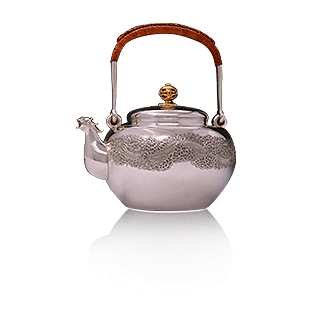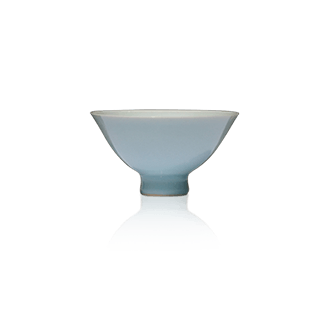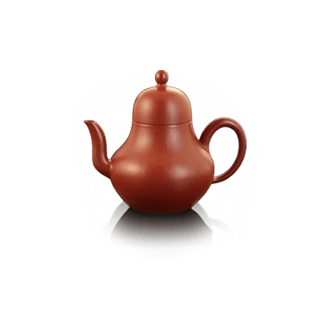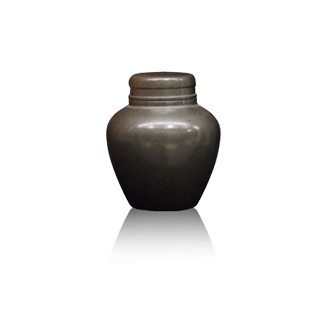



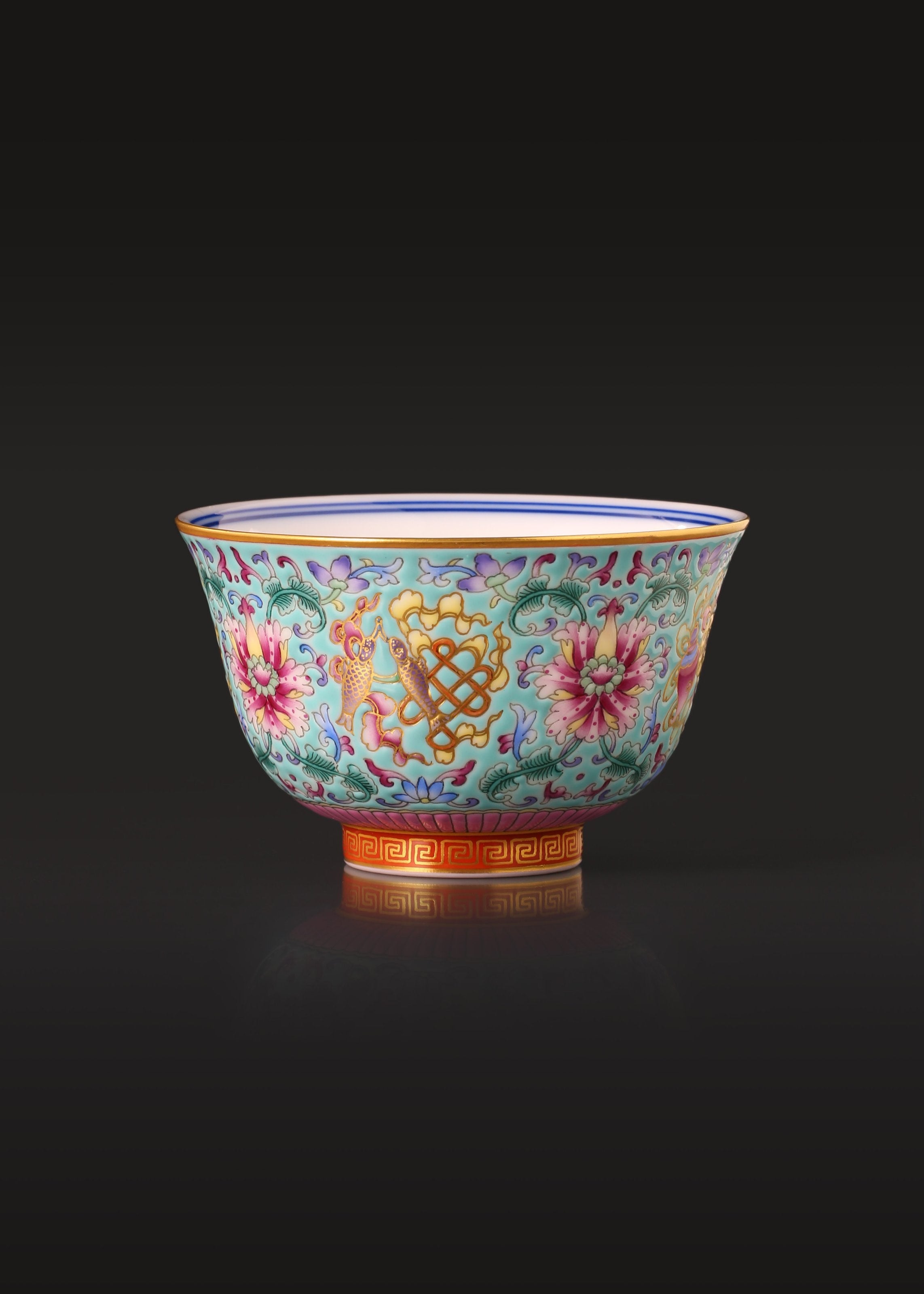

Dayazhai Enamel Eight Treasures Flamed Cup








Dayazhai Enamel Eight Treasures Flamed Cup
Dayazhai Enamel Eight Treasures Flamed Cup
Vessel Type: Flared-rimmed cup
Artist: dayatang
Material: Porcelain
Specifications: Rim Diameter: 8cm; Overall Height: 5.5cm
Vessel Type: Flared-rimmed cup
Artist: dayatang
Material: Porcelain
Specifications: Rim Diameter: 8cm; Overall Height: 5.5cm
The enamel-painted eight-treasure cup with a flared rim was created collaboratively by several masters, including Zhang Jian, a master of overglaze enamel and gold-painting techniques in Jingdezhen.
The porcelain painting on this jar is extremely fine, with lines as delicate as hair. This jar was commissioned by Zhao Qingtao, the owner of Dayatang, and is slightly larger in size.
Eight auspicious treasures:
The Eight Auspicious Symbols, also known as the Eight Treasures or Eight Auspicious Symbols, are called "Tashi Dargye" in Tibetan. They are a common and profoundly meaningful combination of paintings, and the symbols of these eight auspicious objects are closely related to the Buddha or Buddhist teachings.
The Eight Auspicious Symbols consist of the parasol, the fish, the vase, the conch shell, the knot, the banner, the wheel, and the lotus.
Lotus flower intertwined branches pattern:
The exterior is painted with enamel-painted lotus and vine patterns, the shape of which is abstracted from peony flowers. The veins of the leaves are clear, and the branches and leaves are curled and graceful, which is very dynamic.
The colors are vibrant, and the exterior is decorated with gold-painted string patterns.
The lotus flower pattern originated in the Tang Dynasty, possibly reflecting international exchanges between the Tang Dynasty and the West. The intertwined vine pattern originated in the Han Dynasty and flourished during the Northern and Southern Dynasties, Sui and Tang Dynasties, Song and Yuan Dynasties, and Ming and Qing Dynasties.
Enamel:
Besides its intricate and delicate design, the enamel-painted lotus flower cup requires four firings in the kiln to complete, each with its own risks.
Enamelware from the Qing Dynasty was originally intended for the enjoyment of emperors and empresses. Enamel is a special type of artificially fired pigment. Before the sixth year of the Yongzheng Emperor's reign (1728), it had to be imported from Europe. After the sixth year of the Yongzheng Emperor's reign, the Qing Palace workshops were able to refine more than 20 kinds of enamel pigments themselves, which is a product of the peak period of ancient Chinese polychrome porcelain craftsmanship.






Frequently asked questions
Use the FAQ section to answer your customers' most frequent questions.
Order
Yes, we ship all over the world. Shipping costs will apply, and will be added at checkout. We run discounts and promotions all year, so stay tuned for exclusive deals.
It depends on where you are. Orders processed here will take 5-7 business days to arrive. Overseas deliveries can take anywhere from 7-16 days. Delivery details will be provided in your confirmation email.
You can contact us through our contact page! We will be happy to assist you.





